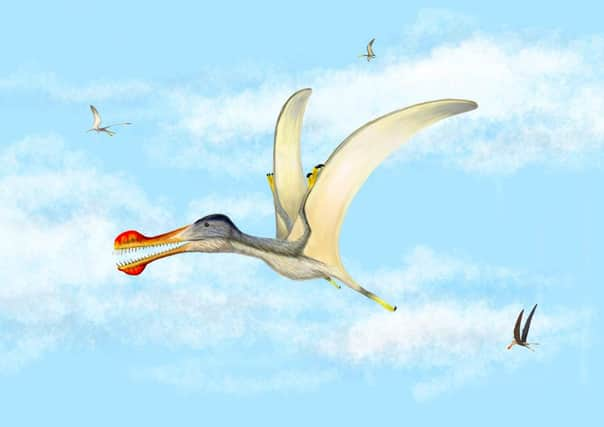University of Portsmouth professor discovers new species of flying reptile


Portsmouth palaeontologist, Professor David Martill, along with researchers from the USA and Morocco, identified three new species of toothed pterosaurs. The reptiles, which inhabited the Sahara region 100 million years ago, roamed the skies with a wingspan of around four metres and would prey on fish using large spike-like teeth on their beaks that ‘formed a highly effective tooth grab’.
Professor Martill made the exciting discovery in Morocco along with Megan Jacobs from Baylor University, Texas, and Nizar Ibrahim from the University of Detroit Mercy.
Advertisement
Hide AdAdvertisement
Hide AdProfessor Martill, who works in the university’s School of the Environment, Geography and Geosciences, said: ‘These flying predators soared above a world dominated by predators, including crocodile-like hunters and carnivorous dinosaurs. Interestingly, herbivores such as sauropods and ornithischian dinosaurs were rare.
‘Many of the predators, including the toothed pterosaurs, preyed on a superabundance of fish. We are in a golden age for discovering pterodactyles. This year alone we have discovered three new species and we are only into March.’
The pterosaurs were part of an ancient river ecosystem which included fish, crocodiles, turtles and several predatory dinosaurs.
The fossilsed remains of the creature, which were published in the Cretaceous Research Journal, are helping to uncover the evolutionary history of Africa during the time of the dinosaurs.
Advertisement
Hide AdAdvertisement
Hide AdProfessor Ibrahim commented: ‘These new finds provide an important window into the world of African pterosaurs. We know so much more about pterosaurs from places like Europe and Asia, so describing new specimens from Africa is always very exciting.’
The newly discovered species would have been able to forage over vast distances, similar to present day birds such as condors and albatrosses.
The new finds show that African pterosaurs were quite similar to those found on other continents. One of the species, Anhanguera, was previously only known from Brazil while another, Ornithocheirus, had until now only been found in England and Middle Asia.
